#Eocene bivalve
Explore tagged Tumblr posts
Photo

Fossil Pectin Shell – Eocene Epoch, Clallam Bay Washington USA, Genuine Bivalve Specimen
A well-preserved Fossil Pectin Shell (scallop) from the Eocene Epoch, approximately 40–50 million years old. This specimen was collected from the Clallam Formation near Clallam Bay, Washington State, USA, a site known for producing beautifully preserved marine invertebrate fossils from the early Paleogene period.
Pectin shells belong to the family Pectinidae, a group of marine bivalves distinguished by their fan-shaped, radially ribbed shells. This fossil showcases the elegant symmetry and surface ribbing typical of this family, preserved in fine-grained sediment.
Fossil Type: Bivalve (Scallop) Shell
Geological Age: Eocene – Ypresian to Lutetian Stages
Formation: Clallam Formation
Depositional Environment: The Clallam Formation was deposited in a shallow marine environment along a continental shelf. Calm conditions and fine silts contributed to the exceptional preservation of molluscs, echinoderms, and other invertebrates in the fossil record.
Morphological Features:
Distinct fan-shaped shell outline
Radiating ribs across the surface
Some specimens retain hinge or growth lines
Notable:
Classic marine invertebrate from the Eocene of the Pacific Northwest
Ideal for educational displays, fossil collectors, or palaeontology enthusiasts
The photograph shows the exact item offered for sale
Authenticity: All of our fossils are 100% genuine natural specimens and come with a Certificate of Authenticity. Please refer to the scale image for exact size – each square or cube equals 1cm.
This Eocene Pectin shell from Clallam Bay offers a glimpse into the marine ecosystems of ancient Washington. A beautiful and scientifically valuable specimen for any fossil enthusiast.
#Pectin fossil#fossil bivalve shell#Eocene fossil USA#Clallam Bay fossil#scallop fossil#marine fossil shell#Washington State fossil#Pectinidae fossil#genuine fossil specimen#collector fossil shell#Eocene bivalve#fossil clam#authentic fossil scallop
0 notes
Text
Round 3 - Mammalia - Sirenia

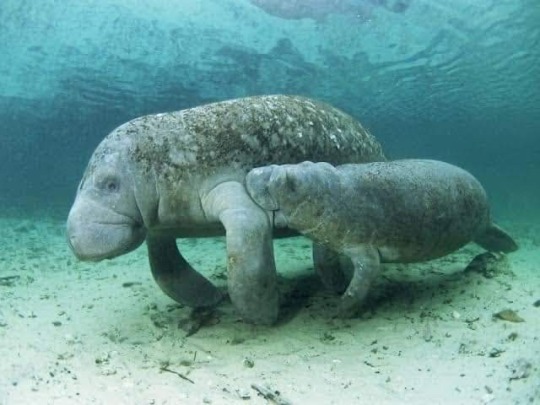
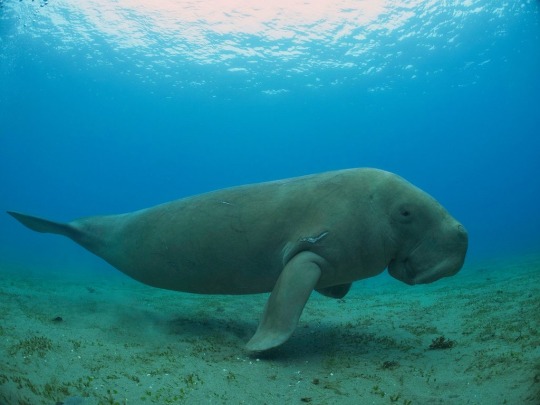
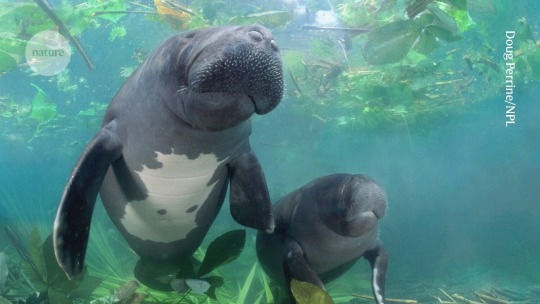
(Sources - 1, 2, 3, 4)
Our last order of afrotherian mammals is Sirenia, commonly referred to as “sea cows.” Sirenia comprises the families Dugongidae (“Dugong”) and Trichechidae (“manatees.”)
As the closest living relatives of elephants, Sirenians are large animals, growing between 2.5 and 4 metres (8.2 and 13.1 feet) long and weighing up to 1,500 kilograms (3,300 pounds). They are aquatic, with long fusiform bodies to reduce drag through the water and heavy bones that act as ballast to counteract the buoyancy of their blubber. Their forelimbs are paddle-like flippers which aid in turning and slowing. West Indian and African Manatees retain nails on their flippers while Amazonian Manatees and Dugongs lack them. Like those of cetaceans, their hind limbs are internal and vestigial. The Dugong’s tail fluke is notched and similar to those of dolphins, whereas the tail fluke of manatees are paddle-shaped. Their blubber layer is thin and sensitive to temperature fluctuations, which cause migrations when water temperatures dip too low. Sirenians are slow-moving, typically coasting at 8 kilometres per hour (5 mph), but they can reach 24 kilometres per hour (15 mph) in short bursts. They use their strong, prehensile lips to graze on seagrasses, consuming 10–15% of their body weight per day. They are mainly herbivorous, but have been known to also eat animals such as jellyfish, polychaete worms, bivalves, and even (dead) fish. Sirenians have poor eyesight but a good sense of smell, as well as highly sensitive whiskers, or vibrissae, which are not only used to sense things, but can be used to grasp and manipulate food. They typically inhabit warm, shallow, coastal waters, or rivers.
Despite being mostly solitary, sirenians congregate in small groups while females are in estrus. These groups usually include one female with multiple males, who fight for the right to mate with her, lunging at each other and sometimes leaving scars with their short tusks. Males leave after mating, taking no part in child-rearing. Sirenian gestation is 12 to 15 months long, and they usually give birth to just one calf. Sirenians invest considerable parental care into their young, lactating for 1 to 2 years and taking care of their calves for up to 7 years before having another, though they can reproduce once every 2-3 years. Sirenians reach sexual maturity between the ages of 3 and 18, depending on species. Females give birth only a few times during their lives.
Sirenians have been around since the Early Eocene, some 55.8 million years ago

Propaganda under the cut:
All three living manatee species as well as the dugong are listed as Vulnerable on the IUCN Red List of Threatened Species. They are vulnerable to extinction from habitat loss and other impacts related to human population growth and coastal development, such as boat strikes, net entanglement, plastic and debris in the water, and pollution run-off causing algal blooms. Climate change is also predicted to make winter months even colder, leading to increased instances of cold stress in manatees, and impacts on their seagrass diet. In some countries, sirenians are still poached for meat, and their calves are sometimes sold as pets on the black market.
The extinct Steller's Sea Cow (Hydrodamalis gigas) was the largest sirenian to have ever lived, reaching lengths of 10 metres (33 feet) and weights of 5 to 10 tonnes (5.5 to 11.0 short tons). This dugongid was described in 1741, and within 27 years of its discovery by Europeans, the slow-moving and easily-caught mammal was hunted to extinction for its meat, fat, and hide.
Dugongs (Dugong dugon) (image 3) are social, though they do not often gather together due to the inability of seagrass beds to support large populations. They are known to communicate with each other through chirps, whistles, barks, and other sounds that echo underwater. Different sounds have been observed with different amplitudes and frequencies, implying different purposes.
The oldest recorded Dugong lived to be 73.
A common belief found in the Philippines, and some parts of Malaysia, Indonesia, and Thailand, is that Dugongs were originally human or part-human (usually women), and that they cry when they are butchered or beached. Because of this, it is considered bad luck if a dugong is killed or accidentally dies in nets or fish corrals. Dugongs are predominantly not traditionally hunted for food in these regions and they remained plentiful until around the 1970s.
Sirenians are often cited as one of the animals that could have inspired the mermaids of legend. While they likely didn’t inspire the mythology itself (there are plenty of half-woman-half-something-else monsters in folklore; medieval sailors and artists didn’t need to see a vaguely-human-shaped swimming animal to come up with a fish-woman), some sailors may have confused manatees and dugongs for the mythological mermaids. One such sailor was Christopher Columbus, who unknowingly penned the first record of a manatee in North America when he recorded a sighting of “3 mermaids,” stating that mermaids were not as beautiful as they had been painted despite having somewhat human faces. In languages like Ilocano, Mapun, Yakan, Tausug, and Kadazan Dusun of the Philippines and Sabah, the name for Dugongs is a synonym for "mermaid". In Malay, they are sometimes referred to as perempoen laut ("woman of the sea") or putri duyong ("dugong princess").
Manatee vibrissae (whiskers) are so sensitive that they are able to perform active touch discrimination of textures. Manatees also use their vibrissae to navigate the turbid waterways of their environment. Research has indicated that they are able to use these vibrissae to detect hydrodynamic stimuli in the same way that fish use their lateral line system.
The Amazonian Manatee (Trichechus inunguis) (image 4) is the only sirenian that lives exclusively in a freshwater habitat. Amazonian Manatees make seasonal movements synchronized with the flood regime of the Amazon Basin. They are found in flooded forests and meadows during the flood season, grazing on plants that would otherwise be unavailable to them, after which they move to deeper waters.
The West Indian Manatee (Trichechus manatus) (image 1) was listed as endangered in the 1970s, when there were only several hundred left. In the decades since, significant conservation efforts have been made to protect the species, particularly from collisions with boats. In 2017, the United States changed the species to "vulnerable", thanks to a significant increase in population.
Over 20% of West Indian Manatee mortalities per year are a result of watercraft collisions. 96% of adult Florida Manatee (Trichechus manatus latirostris) carcasses have scars from a boat collision with some individuals showing signs of 10 or more boat strikes. Manatees respond to approaching vessels by orienting towards deeper waters and increasing their speed, but they are still frequently struck as they don't have the ability to swim very fast and, in shallow habitat, they often don't have anywhere to go to get out of the way. Over half of all watercraft deaths are caused by the impact trauma from the hull of a fast-speeding boat, whereas the remaining percentage is caused by the boat propeller. Watercraft can frequently avoid hitting manatees simply by reducing speed, allowing time for the manatee to escape out of range. Despite improvements in modeling and changes to local regulations, manatee mortalities from watercraft collisions continue to rise, with an all-time high of 137 recorded deaths in 2019.
Harmful algae blooms are an additional threat to manatees. “Red tide” is a common name for harmful algal blooms, deriving their distinctive color from pigmentation molecules in the algae, though harmful algal blooms can also be blue, green, or brown. The blooms produce brevetoxins which are potentially fatal to marine life. Most manatee deaths from red tide occur when manatees inhale the toxins, or ingest the toxins when consuming seagrass, their primary food source. They may also die of starvation when cloudy water leads to their primary source of food being unable to photosynthesize. Algal blooms are a result of an excess of nutrients being dumped or washed into the water, usually from agriculture run-off, sewage, and run-off from fertilized lawns and golf courses.
The African Manatee (Trichechus senegalensis) (image 2) is the only sirenian not known to vocalize.
African Manatees are the most omnivorous of all living sirenians, with around 50% of their lifetime diet being non-plant material. They will occasionally steal clams and fish from nets.
Among the Serer People, the African Manatee is viewed in the Creation Myth as guardian of the secrets of the future.
Some extinct sirenians, such as Pezosiren portelli and Prorastomus sirenoides, retained all four of their limbs, and lived semi-aquatic lifestyles akin to hippopotamuses.
100 notes
·
View notes
Text

The Great Sphinx
Who Built the Sphinx? The Sphinx Temple Has the Answer by Mark Lehner
Many alternative thinkers claim the Sphinx is much, much older, that it existed thousands of years before Khufu. But our study of the Sphinx and the temple lying just below it—the Sphinx Temple—says no. As certain as we can be about such matters, Khafre created most of the Sphinx. However, Khufu might have started it.
The stone-by-stone map of the Sphinx Temple allowed us to investigate a telltale clue about who built the Sphinx. Quarrymen cut the core blocks (the ones forming the core of the temple walls) so thick—some weigh up to a hundred tons—that many of them include three geological layers. And it was clear that the layers in many blocks were the same as those that run through the bedrock of the Sphinx itself. The blocks had to have come from the U-shaped ditch around the Sphinx. When workers quarried the ditch they left a large block of limestone from which the Sphinx was carved.
As I moved about the Sphinx Temple during my first year of the mapping project, I was struck by how the geological layers run continuously in many places, from one block to another, as the layers must have run in the bedrock. The gangs of young men who moved these mighty stones did not have much chance of mixing them up from quarry to temple wall. The Sphinx and its temple must have been part of the same quarry-construction sequence. But could I prove this?
The following year I met Tom, who had the expertise needed to geologically “fingerprint” the blocks and trace them back to the quarry. Tom looked at the Giza Plateau less as an archaeological site and more as frozen sea floors, petrified, pancaked, and stacked into the bedrock layers from which the pyramid builders quarried blocks, created tombs, and carved the Sphinx.
These layers formed during the Eocene epoch—some 34 to 56 million years ago, as a great primordial sea retreated northward. Under its ebbing waters, a colossal bank of nummulites, unicellular plankton-like organisms, built up. A sandbar developed on the embankment, and in the more protected waters behind it, a shoal and coral reef grew. As the sea retreated to the north, the area behind the sand bank became a muddy lagoon, inhabited by burrowing bivalves and sea urchins. A regular sequence accumulated, which petrified as soft, yellow, marly layers interspersed with harder beds.
In carving the Sphinx directly from the natural rock, the ancient Egyptian quarrymen cut a cross-section through the principal geological layers of the southeastern slope of the Moqattam Formation. The hard layers of the shoal and reef, for example, make up the lowest layer in the Sphinx and its ditch.
Tom and I began our Sphinx Temple core block study by examining each layer, or bed, of the Sphinx. We gave each bed a number and marked them on photographs and on profiles of the Sphinx. The beds were easy to distinguish as they weathered differentially: harder beds protruded, softer beds receded. Also, the relative abundance of different fossils varied. Members I and II showed the greatest differences: I is a very hard gray reef formation, while the first bed of Member II, 2b, is one of the softest of the yellow marl-clay layers. Members II and III are distinct, but the boundary is not so clear as between I and II. Aigner, following an earlier geologist, set the boundary between Beds 7 and 8.
The massive fine-grained bedrock of Beds 8–9 made for good sculpting, with far more endurance than the soft-hard-soft sequence of Member II. This is why the 4th Dynasty builders reserved Member III for the more exposed head. Details like the eyebrows have survived wind, rain, and sand for 4,500 years.
But from which beds exactly did they cut the core blocks? Would this tell us where they were in fashioning the Sphinx at the time they built the Sphinx Temple? To answer these questions we logged each block. We recorded their lithic qualities and fossil content, and assigned each block to one of seven types, A through G.
Most of the Sphinx Temple core blocks are Type A and consist of three layers: upper and lower hard massive layers separated by the soft, yellow marl layer in the middle, which runs continuously through separate blocks over long stretches of temple wall. These blocks come from beds that correspond to the lower chest of the Sphinx.
Type C blocks come from beds that correspond to the Sphinx’s upper chest, top of the chest, and base of the neck. In the Sphinx Temple these blocks cluster near the front. The quarry workers hewed the blocks from layers that would become the lion’s upper chest and top of the back and then dragged them to the eastern front of the Sphinx Temple. As quarry workers cut deeper, to the middle and lower Sphinx chest level, haulers and builders composed most of the core walls of the temple.
Block types B and D did not come from the Sphinx ditch. They most closely match strata to the southwest, exposed in the quarry cut for the Khentkawes Monument. They are less frequent and more intermittent in the temple walls than the A and C blocks. This could indicate that the builders stockpiled these blocks and brought them into the walls whenever there was a hiatus in the quarrying, dragging, and placing of the A blocks from the Sphinx ditch.
Khafre’s workers started shaping the Sphinx as they built his valley temple. And they were probably still shaping the lower lion body, cutting it out of its surrounding ditch, as they made the Sphinx Temple, Khafre’s last major addition to his pyramid complex. But they did not finish. They left the Sphinx Temple incomplete, without its exterior granite casing.
#ancient egypt#kemet#kemetic#egypt#pharaonic#Great Sphinx of Giza#seven wonders of the ancient world#Khufu#Khafre
118 notes
·
View notes
Text
Fossil Friday: Campanile giganteum

One of our surprisingly popular March Madness competitors, Campanile giganteum is marine snail from the Paris Basin of France during the Eocene Epoch 56-33.9 Ma. It was first described by the famous Jean-Baptiste Lamarck in 1804, He initially had it in the genus Cerithium, which, to be fair, doesn't look a whole lot different.

It was found in the Lutetian limestone (Calcaire lutecian) also known as the Paris Stone. This formation consists of a freshwater limestone deposited on top of a marine limestone as well as some minor calcareous and glauconitic sandstones. This suggests an open, shallow subtidal zone.
This giant snail lived alongside other invertebrates like foraminiferans,
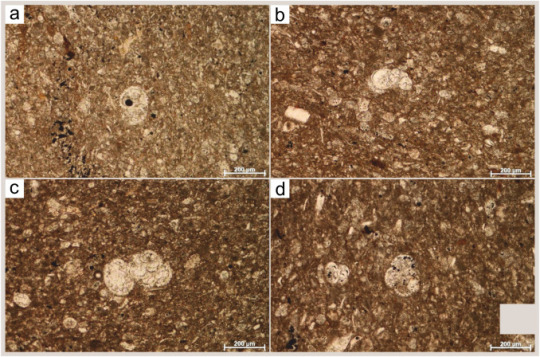
a bivalve called Crassatella,
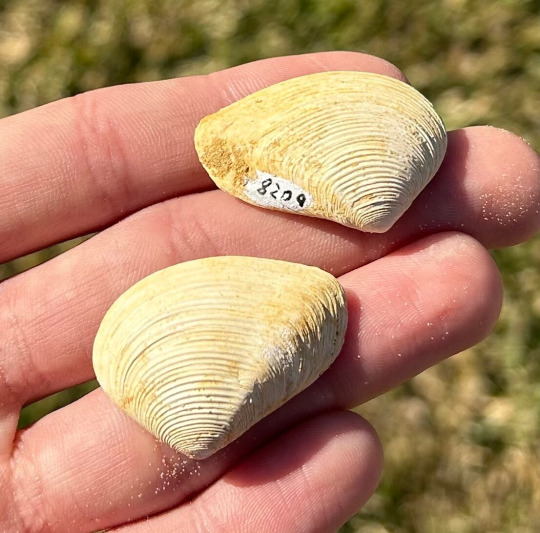
other snails,
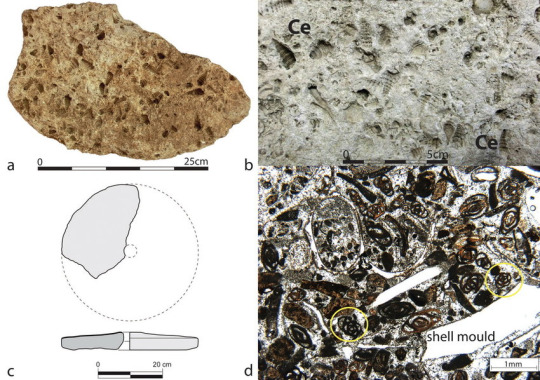
and marine worms.
C. giganteum is actually only one species of many within the genus Campanile. it belongs in the phylum Mollusca which includes snails, cephalopods and bivalves.
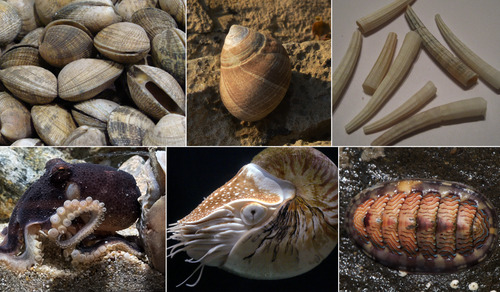
From there they belong in the class gastropoda, commonly known as snails and slugs.

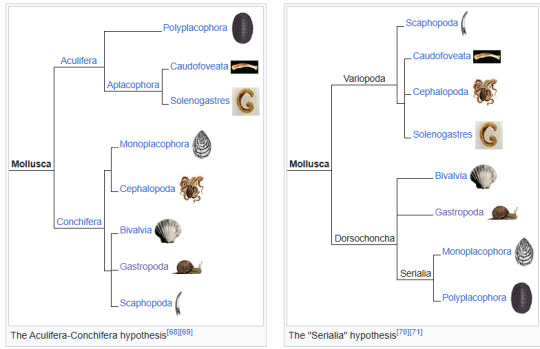
There's currently a bit of debate going on with taxonomy further down, but there are at least 18 named species of Campanile including one living species C. symbolicum whose common name is the Bell Clapper or Giant Creeper. It lives in coastal waters off southwestern Australia.
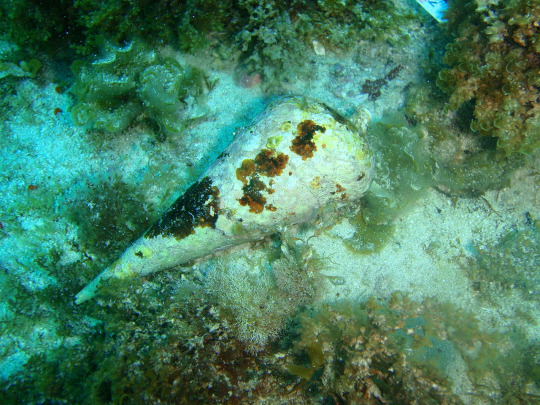
C. giganteum was the largest gastropod to have lived (as far as we know). It got up to 35 in (90cm) on average. C. symbolicum only gets to a little less than 10 inches (24 cm).
A study was done in 2020 on C. giganteum in regard to growth and paleoseasonality. They found that C. giganteum grew upwards of 600 mm per year along the helix of their shell. They concluded that it lived in water between 21-32 degrees Celsius (69.8-89.6 degrees F) which really isn't all that different from the Mediterranean Sea today (a little warmer). If you want to read more about this study, here's the link:
https://agupubs.onlinelibrary.wiley.com/doi/full/10.1029/2019GC008794
Make sure you tune in Monday as we talk more about different types of igneous rocks! Fossilize you later!

26 notes
·
View notes
Text

Plartulox and Conecrete (Rock-Poison)
(Revived from the Cone Fossil)
Rogues of the deep sea, Plartulox and Conecrete are greedy and vain beasts,widely scorned throughout Ãrohwa and using their abilities for underhanded activities in turn, however it wasn't always this way...
Once they were revered throughout Ãrohwa for their beautifully patterned shells and assistance in reinforcing the islands with their cementlike slime, they grew discontented with their lack of praise compared to the tapu and the heroic pokemon who led them, and hatched a plan to capture and devour the tapu in the deep sea. Their plan however failed, and the subsequent witch hunt lead to a massive decline of the species, those remaining retreating to the deep sea trenches and abysses to the point many in Ãrohwa find it hard to believe they still exist.
However this current contempt belies another issue, as recently these pokemon have been targeted by seedy companies willing to exploit Plartulox and Conecrete for cheap "green" concrete, destroying the deep sea habitats they and many other rare pokemon live in to find them, after all, who would care about a creature so widely villanised...?
Welcome to fossil month! (Fossilcember?) A drawing challenge I have set myself to properly draw all of the different fossil mon I've created for the Ãrohwa region, starting with these two.
Design inspiration down below:
The four lines of fossil pokemon found across Ãrohwa are linked by a specific theme, theyre all based on Lazarus Taxa along with a specific extinct animal.
What's a lazarus taxa? An animal which when first described was thought to be extinct,and they're surprisingly common too . A famous example is the ceolocanth, initially described from mesozoic fossils in the 1800s and rediscovered in the 1930s (regardless that the east african fishermen who lived around that area knew it existed for an age before that but thought nothing of it as the fish was no good for eating,but I'm getting ahead of myself) but other examples include the chaco peccary, neptune cup sponge and Lord howe stick insect.



Regardless of all that, which creatures are Plartulox and Conecrete based on?
The primary inspiration for this pokemon are partula snails and cone snails. Both of these animals are found in the south pacific and are respectively threatened by invasive species (with many partula species going extinct) and overcollection respectively. Cone snails are also known for secreting a venom strong enough to be fatal to humans.


In terms of lazarus taxa, the closest I can find would be the bell clapper sea snail, an Australian species and last surviving member of its family (the shell pictured is of an eocene relative whose shell grew to over a meter long!)


There's also a mythological aspect to its lore, as it was inspired by the stories of Rogo-Tumu-Here, an octopus demon who captured the wife of one of the Tuamotan island's gods before being killed during her rescue.
Finally beyond that,there's scant inspiration from rudists (reef building cretaceous bivalves) cement mixers and evil sorcerers with tall wizard hats.
Anyway I hope you like these guys, see you next Wednesday for the next one!
7 notes
·
View notes
Photo

Calpitaria sp. Fossil Bivalve - Bracklesham Beds, Eocene, UK | Genuine Specimen + COA
Calpitaria sp. Fossil Bivalve – Bracklesham Beds, Eocene Epoch
Discover a genuine piece of natural history with this Calpitaria sp. fossil bivalve, carefully extracted from the Bracklesham Beds, dating back to the Eocene Epoch. This remarkable fossil was found in Lee-on-Solent, Hampshire, UK, and is a stunning addition to any fossil collection.
Authenticity Guaranteed: All of our fossils are 100% genuine specimens and come with a Certificate of Authenticity for your peace of mind. The fossil shown in the images is the exact specimen you will receive.
Origin & Preparation:
Location: Lee-on-Solent, Hampshire, UK
Geological Formation: Bracklesham Beds
Age: Eocene Epoch (~56–33.9 million years ago)
Discovery Date: 08 March 2025
Discovered By: Our expert team members, Alister and Alison
Preparation: Cleaned, prepped, and treated by Alison to enhance preservation and visibility of fossilized details
Sizing & Presentation:
Scale cube in the photo = 1cm for reference
For full dimensions, please refer to the provided images
Perfect for: ✔ Fossil Collectors ✔ Educational Use ✔ Gifts for Paleontology Enthusiasts ✔ Museum Displays ✔ Natural History Lovers
Own a unique piece of ancient marine history and bring a touch of prehistoric life into your collection today! Fast & Secure Shipping Available.
#Calpitaria Fossil#Fossil Bivalve#Eocene Fossil#Bracklesham Beds#Lee-on-Solent Fossil#Hampshire Fossil#UK Fossil#Marine Fossil#Bivalve Shell#Prehistoric Mollusk#Rare Fossil#Fossil Collector#Natural History#Fossilized Shell#Ancient Sea Life#Geological Specimen#Authentic Fossil#Certificate of Authenticity#Museum-Quality Fossil
0 notes
Photo

Double Venericardia Fossil Bivalve - Eocene, Bracklesham Beds, Sussex, UK - 100% Genuine w/ COA
Discover an incredible Double Venericardia Fossil Bivalve, a fascinating piece from the Eocene epoch, found within the renowned Bracklesham Beds at Bracklesham Bay, Sussex, UK. Dating back over 40 million years, this fossil showcases an extinct genus of marine bivalve mollusks that thrived in ancient marine environments, providing an exceptional glimpse into prehistoric ecosystems.
This particular specimen was discovered by our expert team members, Alister and Alison, on 00 January 1900, and has been carefully cleaned, prepped, and treated by Alison to ensure its remarkable preservation. The distinct ridged shell patterns characteristic of Venericardia bivalves are beautifully displayed, with both halves of the bivalve intact, making it an even rarer and more desirable piece for fossil collectors, educators, and enthusiasts of natural history.
Species: Double Venericardia Fossil Bivalve
Age: Eocene (Approximately 40-50 million years old)
Formation: Bracklesham Beds
Location: Bracklesham Bay, Sussex, UK
Authenticity: 100% genuine fossil, comes with a Certificate of Authenticity
Sizing: Scale cube = 1cm (Full dimensions available in listing photos)
ACTUAL SPECIMEN AS SEEN: The specimen shown in the listing is the exact fossil you will receive. Each piece is hand-selected and professionally photographed to ensure you receive an accurate representation of your fossil. Due to the unique nature of fossils, once this item is sold, a similar specimen with updated images and details will be listed.
Please note that some fossils may be propped up for photography purposes. While we strive to depict colors as accurately as possible, variations may occur due to lighting and screen settings.
Your fossil will be securely packaged to ensure safe worldwide delivery. Whether you are expanding your fossil collection, looking for an educational specimen, or searching for a unique gift, this rare Double Venericardia Fossil Bivalve is an excellent choice.
🔍 Explore our shop for more incredible fossils and prehistoric specimens! 🌍
#Double Venericardia Fossil#Fossil Bivalve#Eocene Fossil#Bracklesham Beds#Bracklesham Bay Fossil#UK Fossils#Fossil Shell#Bivalve Shell#Natural History#Palaeontology#Genuine Fossil#Fossil Collector#British Fossils#Authentic Fossil#Shell Fossil#Fossil Identification#Science Gift#Fossil Enthusiast#Fossil Hunting#Geological Specimen
0 notes
Photo

Venericardia Fossil Bivalve - Eocene, Bracklesham Beds, Sussex, UK - 100% Genuine w/ COA
Discover an incredible Venericardia Fossil Bivalve, a fascinating piece from the Eocene epoch, found within the renowned Bracklesham Beds at Bracklesham Bay, Sussex, UK. Dating back over 40 million years, this fossil showcases an extinct genus of marine bivalve mollusks that thrived in ancient marine environments, providing an exceptional glimpse into prehistoric ecosystems.
This particular specimen was discovered by our expert team members, Alister and Alison, on 00 January 1900, and has been carefully cleaned, prepped, and treated by Alison to ensure its remarkable preservation. The distinct ridged shell patterns characteristic of Venericardia bivalves are beautifully displayed, making it an ideal addition for fossil collectors, educators, and enthusiasts of natural history.
Species: Venericardia Fossil Bivalve
Age: Eocene (Approximately 40-50 million years old)
Formation: Bracklesham Beds
Location: Bracklesham Bay, Sussex, UK
Authenticity: 100% genuine fossil, comes with a Certificate of Authenticity
Sizing: Scale cube = 1cm (Full dimensions available in listing photos)
ACTUAL SPECIMEN AS SEEN: The specimen shown in the listing is the exact fossil you will receive. Each piece is hand-selected and professionally photographed to ensure you receive an accurate representation of your fossil. Due to the unique nature of fossils, once this item is sold, a similar specimen with updated images and details will be listed.
Please note that some fossils may be propped up for photography purposes. While we strive to depict colors as accurately as possible, variations may occur due to lighting and screen settings.
Your fossil will be securely packaged to ensure safe worldwide delivery. Whether you are expanding your fossil collection, looking for an educational specimen, or searching for a unique gift, this rare Venericardia Fossil Bivalve is an excellent choice.
🔍 Explore our shop for more incredible fossils and prehistoric specimens! 🌍
#Venericardia Fossil#Fossil Bivalve#Eocene Fossil#Bracklesham Beds#Bracklesham Bay Fossil#UK Fossils#Fossil Shell#Bivalve Shell#Natural History#Palaeontology#Genuine Fossil#Fossil Collector#British Fossils#Authentic Fossil#Shell Fossil#Fossil Identification#Science Gift#Fossil Enthusiast#Fossil Hunting#Geological Specimen
0 notes
Photo

Venericardia Fossil Bivalve - Eocene, Bracklesham Beds, Sussex, UK - 100% Genuine with COA
Discover a fascinating piece of Earth's history with this Venericardia Fossil Bivalve, originating from the Eocene epochand found within the famous Bracklesham Beds at Bracklesham Bay, Sussex, UK. This fossil represents an extinct genus of marine bivalve mollusks that thrived over 40 million years ago, offering a glimpse into ancient marine ecosystems.
This specimen has been carefully selected for its quality and detail. It retains distinct bivalve features, showcasing the ridged shell pattern characteristic of the Venericardia genus. Ideal for fossil collectors, educational displays, or as a unique gift for those interested in palaeontology and natural history.
Age: Eocene (Approximately 40-50 million years old)
Formation: Bracklesham Beds
Location: Bracklesham Bay, Sussex, UK
Authenticity: 100% genuine fossil, comes with a Certificate of Authenticity
Sizing: Scale cube = 1cm (For full measurements, please refer to the listing photos)
This is the exact specimen you will receive, professionally photographed to ensure transparency and accuracy. Whether you're expanding your fossil collection, seeking an educational resource, or looking for an intriguing natural history piece, this fossil is an excellent addition.
Order with confidence—this authentic, museum-quality fossil will be securely packaged for safe delivery.
🔍 Browse our shop for more incredible fossils and prehistoric specimens! 🌍
#Venericardia Fossil#Fossil Bivalve#Eocene Fossil#Bracklesham Beds#Bracklesham Bay Fossil#UK Fossils#Fossil Shell#Bivalve Shell#Natural History#Palaeontology#Genuine Fossil#Fossil Collector#British Fossils#Authentic Fossil#Shell Fossil#Fossil Identification#Science Gift#Fossil Enthusiast#Fossil Hunting#Geological Specimen
0 notes
Photo

Venericardia Fossil Bivalve - Eocene, Bracklesham Beds, Sussex, UK - 100% Genuine with COA
Discover a fascinating piece of Earth's history with this Venericardia Fossil Bivalve, originating from the Eocene epochand found within the famous Bracklesham Beds at Bracklesham Bay, Sussex, UK. This fossil represents an extinct genus of marine bivalve mollusks that thrived over 40 million years ago, offering a glimpse into ancient marine ecosystems.
This specimen has been carefully selected for its quality and detail. It retains distinct bivalve features, showcasing the ridged shell pattern characteristic of the Venericardia genus. Ideal for fossil collectors, educational displays, or as a unique gift for those interested in palaeontology and natural history.
Age: Eocene (Approximately 40-50 million years old)
Formation: Bracklesham Beds
Location: Bracklesham Bay, Sussex, UK
Authenticity: 100% genuine fossil, comes with a Certificate of Authenticity
Sizing: Scale cube = 1cm (For full measurements, please refer to the listing photos)
This is the exact specimen you will receive, professionally photographed to ensure transparency and accuracy. Whether you're expanding your fossil collection, seeking an educational resource, or looking for an intriguing natural history piece, this fossil is an excellent addition.
Order with confidence—this authentic, museum-quality fossil will be securely packaged for safe delivery.
🔍 Browse our shop for more incredible fossils and prehistoric specimens! 🌍
#Venericardia Fossil#Fossil Bivalve#Eocene Fossil#Bracklesham Beds#Bracklesham Bay Fossil#UK Fossils#Fossil Shell#Bivalve Shell#Natural History#Palaeontology#Genuine Fossil#Fossil Collector#British Fossils#Authentic Fossil#Shell Fossil#Fossil Identification#Science Gift#Fossil Enthusiast#Fossil Hunting#Geological Specimen
0 notes
Photo

Venericardia Fossil Bivalve - Eocene, Bracklesham Beds, Sussex, UK - 100% Genuine with COA
Discover a fascinating piece of Earth's history with this Venericardia Fossil Bivalve, originating from the Eocene epochand found within the famous Bracklesham Beds at Bracklesham Bay, Sussex, UK. This fossil represents an extinct genus of marine bivalve mollusks that thrived over 40 million years ago, offering a glimpse into ancient marine ecosystems.
This specimen has been carefully selected for its quality and detail. It retains distinct bivalve features, showcasing the ridged shell pattern characteristic of the Venericardia genus. Ideal for fossil collectors, educational displays, or as a unique gift for those interested in palaeontology and natural history.
Age: Eocene (Approximately 40-50 million years old)
Formation: Bracklesham Beds
Location: Bracklesham Bay, Sussex, UK
Authenticity: 100% genuine fossil, comes with a Certificate of Authenticity
Sizing: Scale cube = 1cm (For full measurements, please refer to the listing photos)
This is the exact specimen you will receive, professionally photographed to ensure transparency and accuracy. Whether you're expanding your fossil collection, seeking an educational resource, or looking for an intriguing natural history piece, this fossil is an excellent addition.
Order with confidence—this authentic, museum-quality fossil will be securely packaged for safe delivery.
🔍 Browse our shop for more incredible fossils and prehistoric specimens! 🌍
#Venericardia Fossil#Fossil Bivalve#Eocene Fossil#Bracklesham Beds#Bracklesham Bay Fossil#UK Fossils#Fossil Shell#Bivalve Shell#Natural History#Palaeontology#Genuine Fossil#Fossil Collector#British Fossils#Authentic Fossil#Shell Fossil#Fossil Identification#Science Gift#Fossil Enthusiast#Fossil Hunting#Geological Specimen
1 note
·
View note
Photo

Sycostoma pyrus Fossil Gastropod – Eocene Barton Beds – Barton-on-Sea, Hampshire, UK – Authentic Specimen
Authentic Sycostoma pyrus Fossil Gastropod – Eocene Period – Barton-on-Sea, Hampshire, UK
This beautifully preserved specimen is an authentic fossil of Sycostoma pyrus, a marine gastropod from the Eocene epoch, recovered from the renowned Barton Beds at Barton-on-Sea, Hampshire. It offers collectors a striking example of molluscan life from around 40 million years ago.
Fossil and Geological Information:
Species: Sycostoma pyrus
Family: Melongenidae
Superfamily: Buccinoidea
Order: Neogastropoda
Geological Stage: Bartonian Stage, Middle to Late Eocene (approximately 41.2–37.8 million years ago)
Formation: Barton Beds (Upper Bracklesham Group)
Location: Barton-on-Sea, Hampshire, England, UK
Depositional Environment: Shallow, subtropical marine shelf with fine sands and silts—ideal for preserving invertebrate fossils
Notable Morphological Features:
Pyriform (pear-shaped) shell with a moderately tall spire
Robust body whorl and faint spiral ornamentation
Distinct aperture structure typical of marine carnivorous snails
Biozone: Consistent with the Barton Group invertebrate fossil biozones, often tied to zones containing Venericardia planicosta and other bivalves and gastropods
Scientific Recognition: First described and classified during early research on Hampshire Basin fossil faunas (original naming and revisions by various 19th-century naturalists including Edward Forbes and S.V. Wood)
Specimen Details:
Discovered by: UKGE team members Alister and Alison
Date of Discovery: 15 April 2023
Prepared by: Alison
Scale Reference: Scale cube = 1cm – refer to photo for exact measurements
Photographic Accuracy: The specimen you see is the exact fossil you will receive
Authenticity Guarantee: All of our fossils are 100% genuine and include a signed Certificate of Authenticity
About the Barton Beds:
The Barton Beds of the Hampshire Basin are internationally famous for yielding an abundant and well-preserved marine fauna from the Eocene period. These include molluscs, sharks' teeth, bryozoans, and more—offering a window into Britain’s warm, tropical marine past.
This fossil is not only a valuable collector’s item but also a striking natural artefact perfect for educational use or display.
#Sycostoma pyrus fossil#Eocene gastropod#Barton Beds fossil#fossil shell UK#Barton-on-Sea fossil#Hampshire fossil mollusc#marine gastropod fossil#Eocene mollusc#authentic fossil shell#UK fossil invertebrate#British fossil gastropod#marine sediment fossil#palaeontology UK
0 notes
Photo

Gastropod Turritella sulcifera Fossil – Barton Beds, Eocene – Alum Bay, Isle of Wight, UK
Gastropod Turritella sulcifera Fossil – Barton Beds, Eocene – Alum Bay, Isle of Wight, UK
About the Fossil:
This well-preserved Turritella sulcifera fossil originates from the Barton Beds of the Eocene epoch (~40-37 million years ago) and was discovered at Alum Bay, Isle of Wight, United Kingdom. Turritella is a genus of marine gastropods known for their elongated, tightly coiled shells with distinctive ridges and whorls, making them a highly recognizable and sought-after fossil.
These gastropods thrived in warm, shallow Eocene seas, where they lived on or just below the seafloor, feeding on organic particles in the water. The Barton Beds, part of the larger Barton Group, are well-known for their exceptionally preserved marine fossils, including mollusks, bivalves, and gastropods, which help paleontologists reconstruct ancient marine environments.
Geology & Formation:
Geological Age: Eocene (~40-37 million years ago)
Formation: Barton Beds, Barton Group
Location: Alum Bay, Isle of Wight, UK
Preservation: Excellent fossilization with detailed shell structure and fine whorls
Why This Fossil?
✔ 100% Genuine Specimen ��� Comes with a Certificate of Authenticity
✔ Highly Collectible – From the renowned Alice Purnell Collection
✔ Perfect for Display or Study – Ideal for fossil collectors, students, and paleontology enthusiasts
✔ Scale Rule/Cube = 1cm – See photos for full sizing
The fossil in the photo is the exact specimen you will receive!
Secure Packaging & Fast Shipping – Your fossil will be carefully packed for a safe journey!
#Turritella sulcifera#Eocene fossil#fossil gastropod#Barton Beds fossil#Alum Bay fossil#Isle of Wight fossil#UK fossils#rare gastropod#fossilized shell#marine fossil#natural history#paleontology#gastropod collection#prehistoric marine life#Alice Purnell Collection#genuine fossil specimen
0 notes